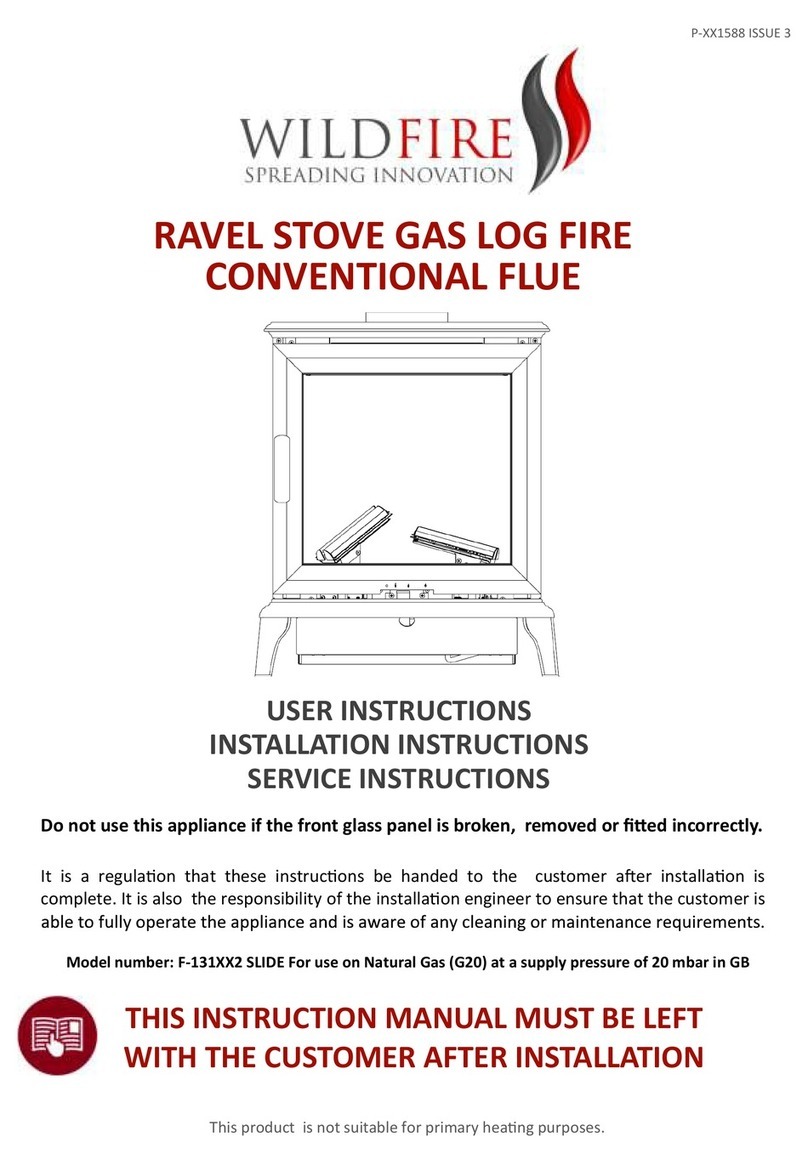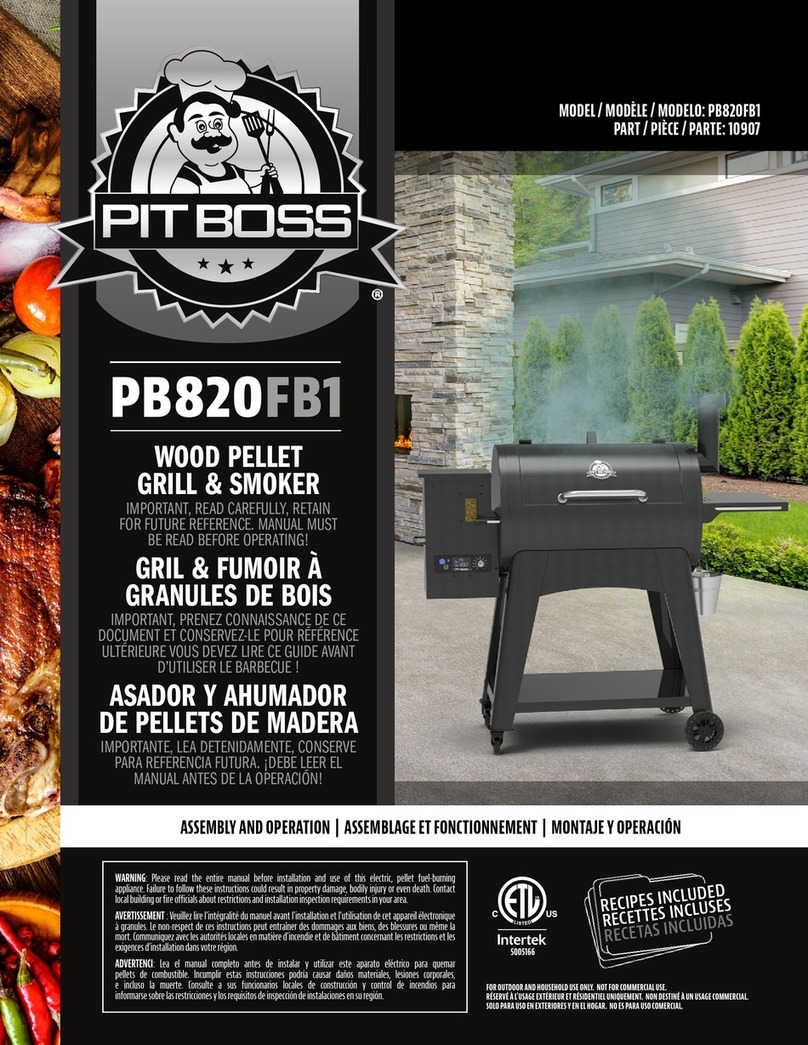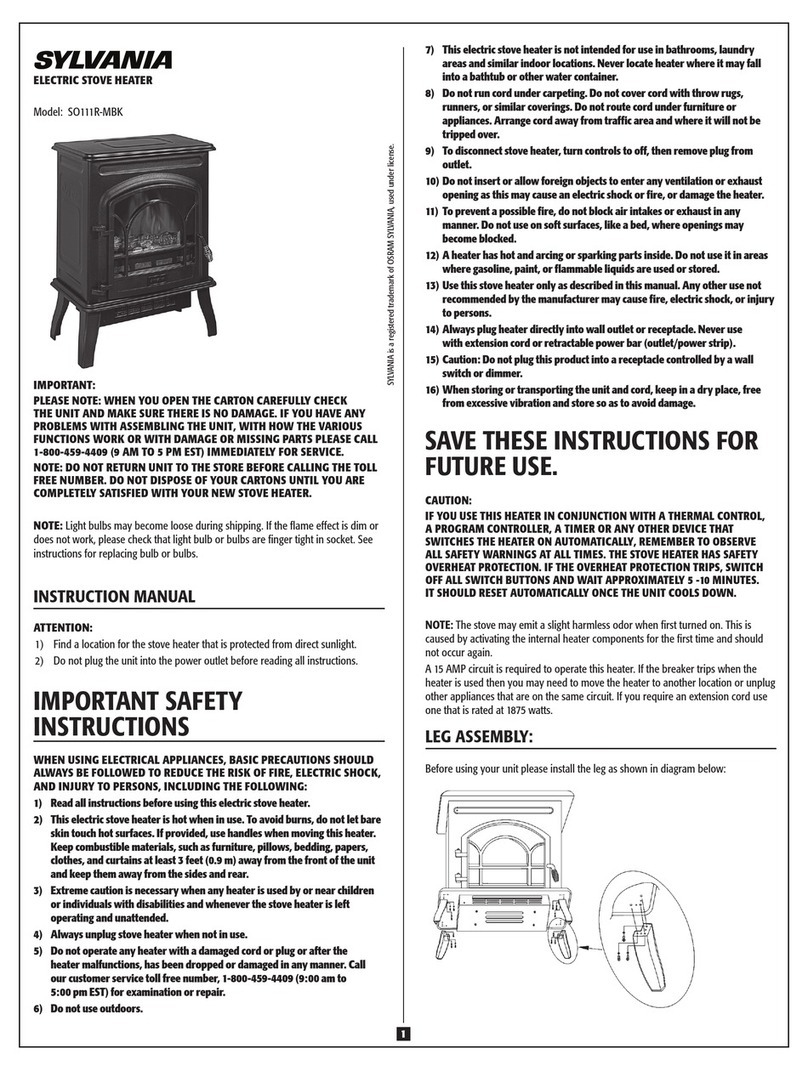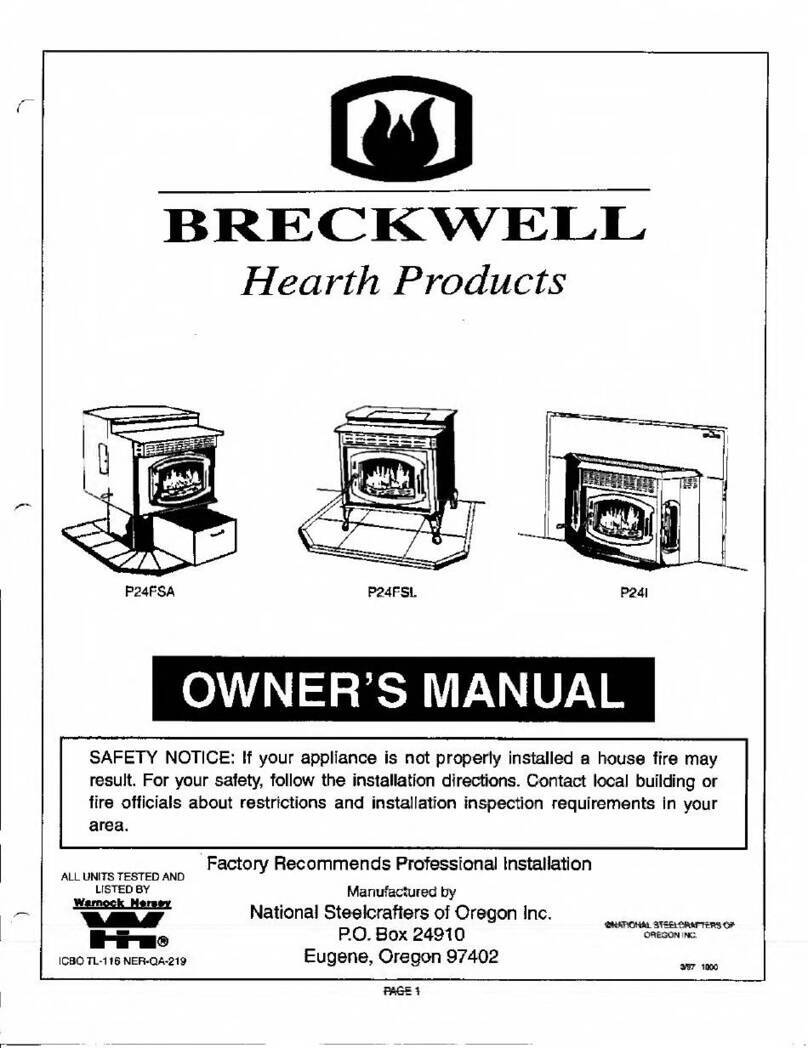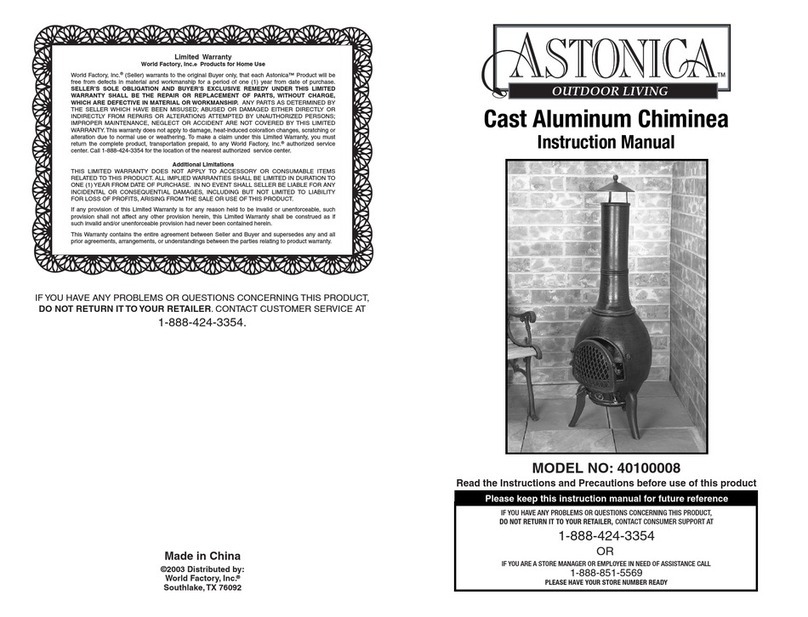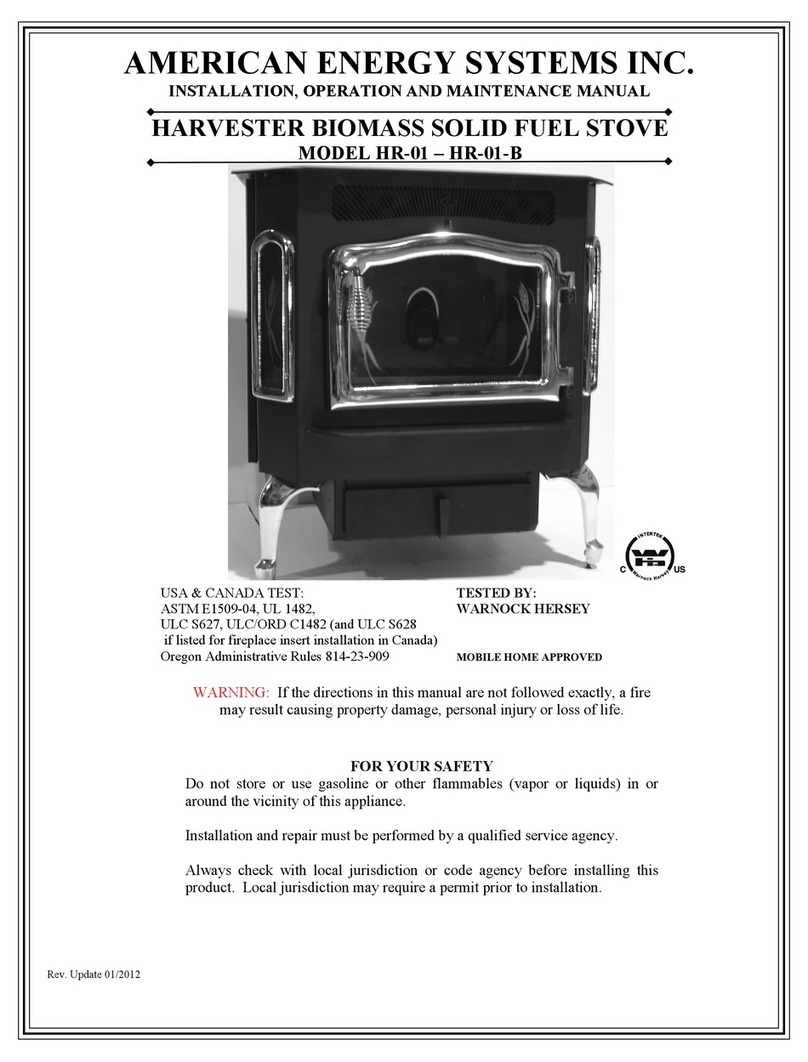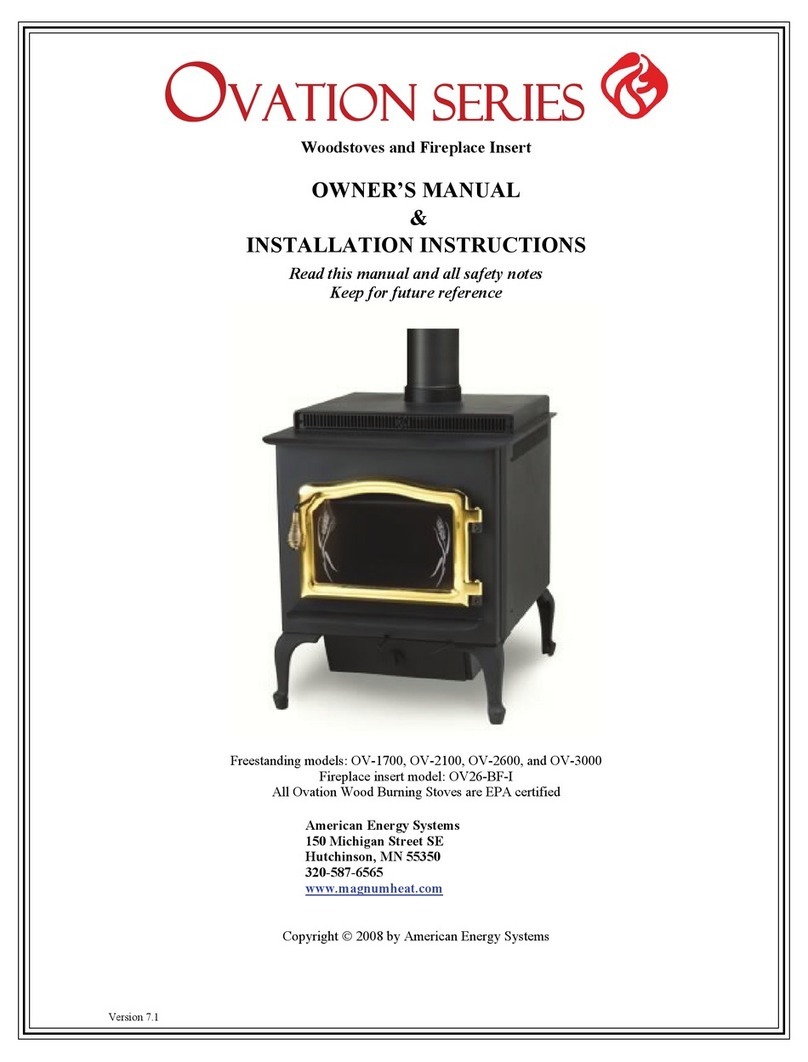
7
DESCRIPTION
The LR-01 Wood Pellet Stove is designed to sit on legs as a freestanding unit. The
basic stove unit measures 22 3/4” high by 26” wide and 19 3/4” deep. Centered above
the firebox glass front door is a vent through which room convection air is passed.
The left side of the Little Rascal has a control panel called the control board. The
control board includes 5 heat settings, an ON/OFF switch and lights to indicate the
operational state of the board. The control board monitors and controls all functions of
stove operation. Fine tuning the air flow is controlled by the operator with a damper.
The damper is manually set to obtain optimum burn based on heat setting and local site
conditions. Typically, the air setting will be ½ to 2/3 open all the time.
On the back of the Little Rascal stove is located a 3” tube for installation of outlet
exhaust vent pipe. Also located on the back of the stove is a place to install a 3” inlet
air tube to bring fresh air in from outside the house. DO NOT INSTALL too long a
length of fresh air pipe at 3”. Length and size of fresh air pipe will be determined by
local site specific conditions. Typically do not have over 2 elbows and over 10 feet go
to 4” diameter. The top of the unit lifts up for easy loading of fuel.
1. The Country Flame LR-01 is remarkably simple and safe in its operation. From a
relatively small firebox over 40,000 BTU’s per hour can be produced.
2. The fuel (APFI approved) is loaded into the hopper. After the fire has been lit (see
lighting instructions) an angled drive auger delivers fuel, a few pellets at a time,
into the firepot at a controlled rate. The combustion blower delivers directed air
input, creating a vigorous, efficient burn. The hot exhaust gases are drawn through
a 14-tube heat exchanger, which extracts heat from the gases as they are discharged
to the exhaust pipe.
3. A second blower circulates room air through the heat exchanger, pushing warm air
into the room from the tubes located just above the door. The room air blower is
intended to run continuously and can be easily controlled to maintain a uniform
temperature.
4. The Pellet Stove will deliver a constant amount of heat, which can be varied by
setting the fuel control knob. Besides initial lighting of the unit, the only regular
attention needed will be to fill the 55pounds hopper with fuel; inspection of the
firepot for “clinkering” (see operating instructions) and removal of ash buildup as
required. Typical would be once a day or twice if fuel is lower quality.
AIR DAMPER ADJUSTMENTS
Each LR-01 is shipped with an air damper adjustment. The air damper control is
located on the front of the pellet stove below the hearth lip located directly centered on
the front door. As site specific operating conditions require, such as fuel, altitude, and
customer usage preferences require, there will be a requirement to adjust the air damper

